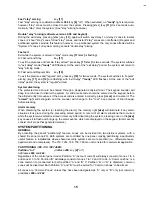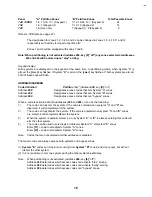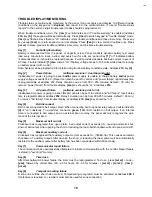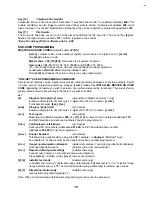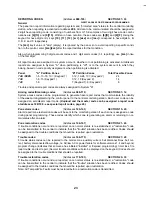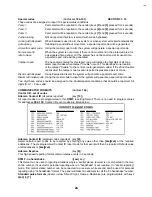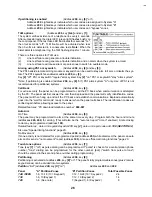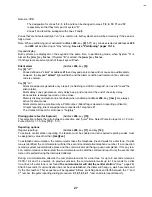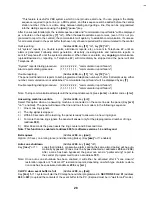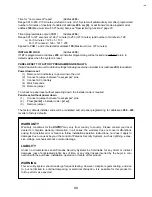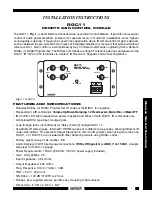
If partitioning is enabled
(Address 206, key [8] "on")
Address 200: Lighted keys indicate which user codes are assigned to System "A".
Address 202: Lighted keys indicate which user codes are assigned to System "B".
Address 204: Lighted keys indicate which user codes can "bypass" zones.
.
There are three options for TLM use.
(1)
Line test failure can generate a trouble indication.
(2)
Line test failure can generate a trouble indication and an alarm when the system is armed.
(3)
Line test failure will cause silent or panic zones to switch to audible mode.
Arming using PS1 or keyswitch
(Address 206, key [2] and key [3])
The PS1 bedside remote arming module or keyswitch can be used to stay arm, full arm, or disarm the sys-
tem. The PS1 keyswitch is enabled at address 206, key [3].
Key [2] "off": PS1 or keyswitch "regular" arms system. Key [2] "on": PS1 or keyswitch "stay" arms system*.
*Note: if partitioning is enabled (address 206, key [8] "on") PS1 arms system "A" only. Use of PS1 is not
recommended for partitioned systems.
Call Back
(Address 206, key [4])
For extra security the panel can be programmed to call the PC back when communication is attempted
by the PC. The panel will first answer the call, then Espload and the panel will verify identification codes.
The panel will then hang up and call the PC back and establish communications. Espload automatically
goes into the “wait for call mode” ready to answer when the panel calls back. The identification codes are
verified again before allowing access to the panel.
Related features: “PC download telephone number” 060-067.
Auto Arm
On Time:
(Address 206, key [5])
The panel may be programmed to arm at the same time every day. Program both the hour and minute
(addresses 245, 246) for arming. (This will also be the "auto test report" time, if enabled.) A late closing
code may be programmed (address 190).
Related features: Auto arm regular/stay add. 210, key [2], Auto arm report code add. 188 (SECTION 32)
Also see "Special timing functions" page 20.
No Movement:
(Address 206, key [6])
If zone activity is not detected for a programmed period (address 253) while disarmed, the panel can auto
arm and/or send a "no movement" report (address 190). Also see "Special timing functions" page 20.
Touch tone options
(Address 206, key [7])
Tone (key [7] = "on") or pulse dialing can be programmed. If "pulse" is chosen for a central station phone
number, "tone" dialing can be programmed for the other number. [
BYP
] ("switch from pulse to tone")
should be entered in the second phone number during programming.
Partitioning
(Address 206, key [8])
Partitioning is activated at address 206, key [8] "on". The panel's fully programmable zones (plus 2 remote
keypad zones) can be divided into two systems.
Partition "on" (address 206, key [8] "on")
Addresses 240 and 242:
Panel
"A" Partition Zones
"B" Partition Zones
Total Possible Zones
748, 748ES
1-6, 13-18 (13 = Keypad 1)
7-12, 19-24 (19 = Keypad 2)
24
738
1-6, 13(Keypad 1)
7-12, 19 (Keypad 2)
14
728
1-6 (See note)
7 (Keypad 1), 8 (Keypad 2)
8
26
IM8
(default)
TLM options
(Address 206, key [2
ND
] and key [1])
The system verifies existence of a telephone line every 4 seconds.
After successful tests, the dialer LED (green light) flashes briefly on
the control panel. If the test fails, LED illuminates four seconds "on",
then four seconds "off ". TLM trouble will be activated when less
then 3 volts are detected in 4 consecutive tests. Note: When the
dialer detects a telephone ring, the TLM flashing stops for 1 minute.




